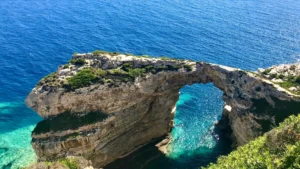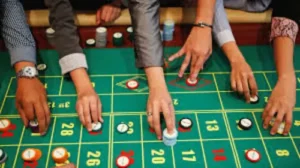About 40 Km from Yogyakarta and 15 Km from Magelang (Central Java Province) are these three Buddhist stupas which belonged together and seem to have been built in one straight line. These stupas have been built in the 8-9th. Century by the kings of Mataram from the Sailendra dynasty. In the tenth century Mount Merapi erupted and buried all the stupa for ages.
The concept of Mahayana’s journey was formed in the shape of Borobudur, Pawon and Mendut. Borobudur that was located on a hill symbolized lokottara (= above the world). The Borobudur building consisted of 10 levels and symbolized 10 levels of Bodhisattva. Two other buildings symbolized laukika, which were sambharamarga (Mendut) and prayogamarga (Pawon). It was based on this concept that Waisak ceremony started from Mendut, Pawon, and then ended in Borobudur.
Indonesia
About 40 Km from Yogyakarta and 15 Km from Magelang (Central Java Province) are these three Buddhist stupas which belonged together and seem to have been built in one straight line. These stupas have been built in the 8-9th. Century by the kings of Mataram from the Sailendra dynasty. In the tenth century Mount Merapi erupted and buried all the stupa for ages.
The concept of Mahayana’s journey was formed in the shape of Borobudur, Pawon and Mendut. Boro¬budur that was located on a hill sym¬bolized lokottara (= above the world). The Borobudur building consisted of 10 levels and sym¬bolized 10 levels of Bodhisattva. Two other buildings sym¬bolized laukika, which were sambhara¬marga (Mendut) and prayogamarga (Pawon). It was based on this concept that Waisak ceremony started from Mendut, Pawon, and then ended in Borobudur.
Mendut
 Is the first to be seen. The stupa has a rectangular groundplan with a large base decorated with panels filled with heavenly beings from whom spring curly branches with lotusflowers; it has a body ornated with Boddhisattvas and Taras and a superstrukture consisting of three parts which have decorations of stupas.
Is the first to be seen. The stupa has a rectangular groundplan with a large base decorated with panels filled with heavenly beings from whom spring curly branches with lotusflowers; it has a body ornated with Boddhisattvas and Taras and a superstrukture consisting of three parts which have decorations of stupas.
There is a flight of steps with wings decorated with Jatakas, which are Buddhist fables narrating the historic Buddha’s previous lives. On the walls of the antechamber are on the left side a relief of Hariti and on the right side a relief of Kuvera.
Inside the chamber are three magnificent statues of stone, collosal in size and impressive. The central Buddha is flanked by Lokesvara on his right hand and Vajrapani on his left. The Buddha is supposed to have belonged to a group of five Dhyani Buddhas, four of which however disappeared from their niches.
Pawon
 This shrine about 2 km farther on the road to Borobudur. It was built in the same style as the Mendut but on a smaller scale. It is supposed to have been dedicated to Kuvera the Buddhist God of Fortune.
This shrine about 2 km farther on the road to Borobudur. It was built in the same style as the Mendut but on a smaller scale. It is supposed to have been dedicated to Kuvera the Buddhist God of Fortune.
Borobudur
 Borobudur stupa was the cosmic mountain, the ancestor step-pyramide and main sanctuary of the Sailendra dynasty.
Borobudur stupa was the cosmic mountain, the ancestor step-pyramide and main sanctuary of the Sailendra dynasty.
The groundplan is like a mandala composed of circles and scuares as used by the Tantric Buddhists in Nepal and Tibet. The scolar found the division in three sphares or datus, namely Kamadhatu – sphare of Kama, desire (taken from Karmavibhangga text in which the law of cause and effect is shown); the Rupadhatu – sphare of forms; Arupadhatu – sphare of detachment from desire and form.

At Kamadhatu, the reliefs depicts the story of Maha Karmavibhangga or documentation of man-kind – daily life which still govern by passion or lust. The reliefs of Rupadhatu illustrates the life of Buddha Gautama (Lalitavistara story), Jataka (story of Buddha before he become Bodhisattwa, Avadana (illustrates the story of heroic saints), and Gandavyuha (the story of Prince Sudhana).

At Borobudur Stupa there are 432 statues of Buddha which are found at Rupadhatu. At the east side of the stupa, there is a statue of Aksobhya, at the north, a statue of Amoghasiddhi, at the west a statue of Amitabha, and at the south a statue of Ratnasambhava. At Arupadhatu there is also a statue of Vairochana .







